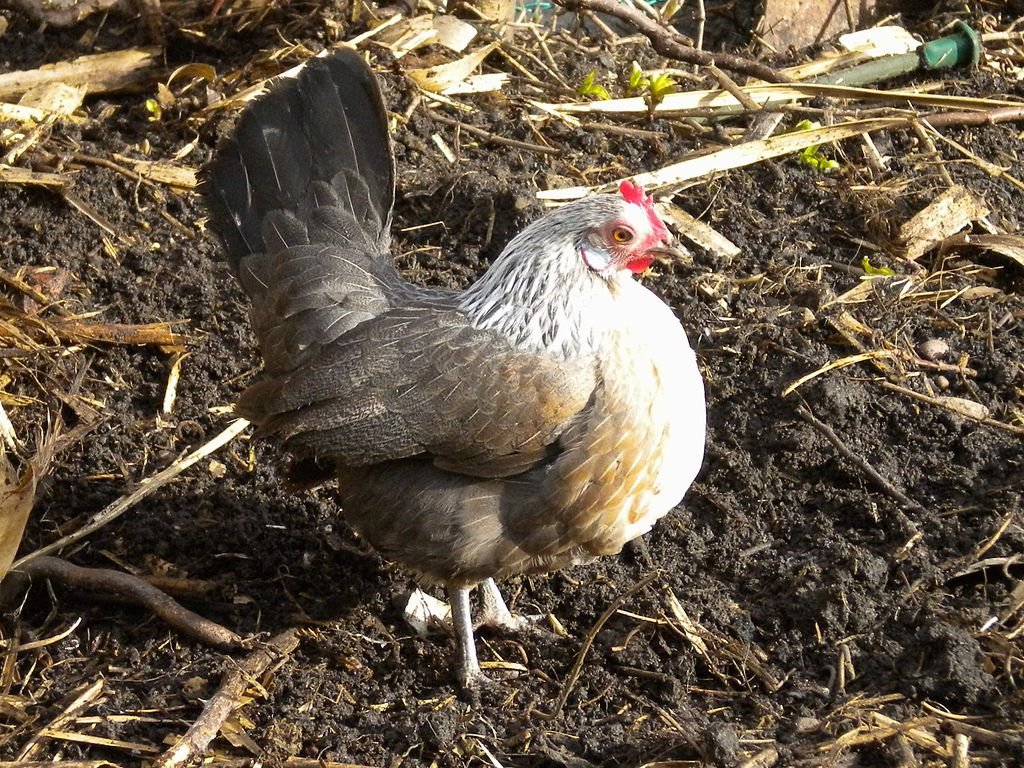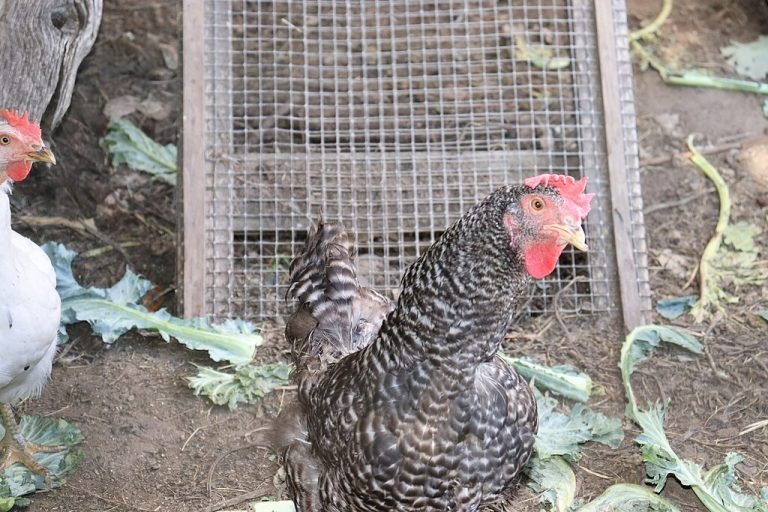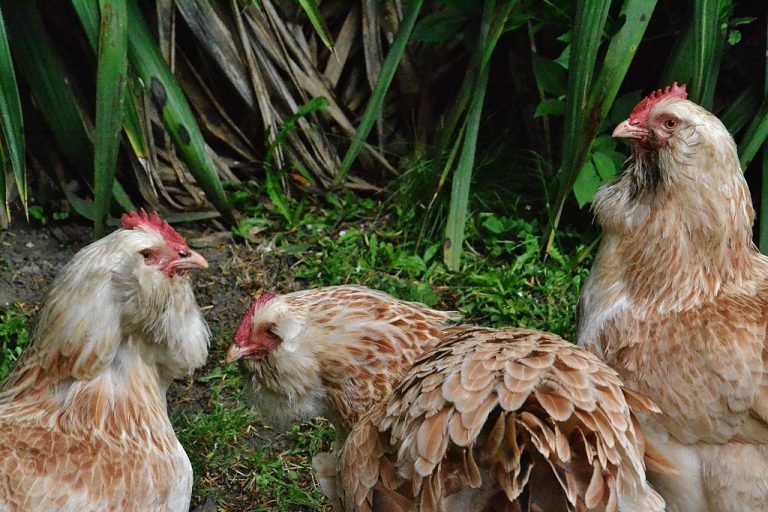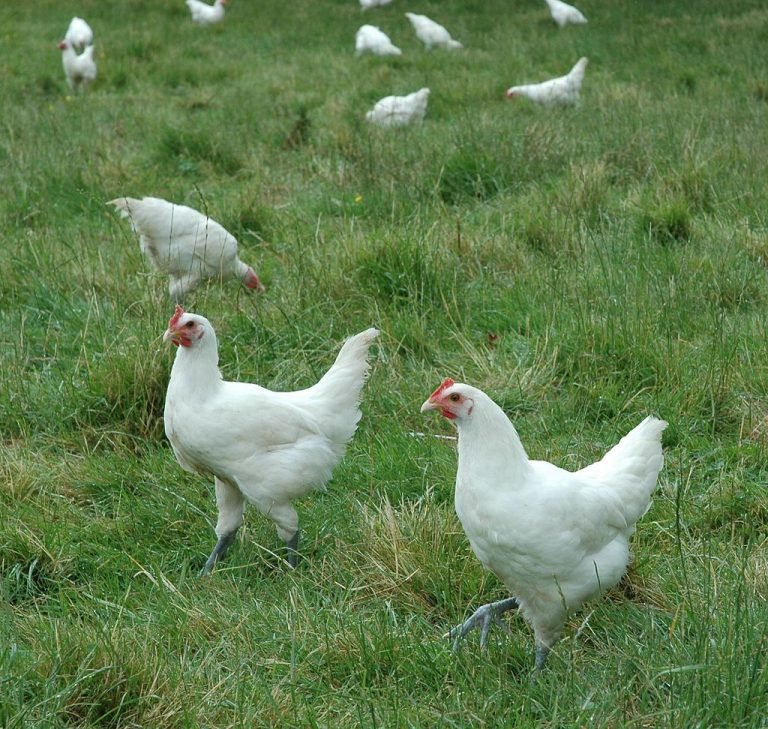The Dutch Bantam chicken breed is a small, yet lively and attractive breed known for its unique appearance and friendly temperament. The Dutch Bantam chicken breed is a small and lively breed known for its unique appearance and friendly temperament.
This breed originated in the Netherlands and has gained popularity worldwide for its striking colors and compact size. Dutch Bantams are known for their upright stance, short wings, and full tail feathers that are often held high. They come in various color varieties, including silver, gold, black, blue, and more.
While their size may be small, Dutch Bantams make up for it with their feisty and curious nature. They are quite friendly and can be easily tamed, making them suitable for backyard chicken keepers and poultry enthusiasts. In addition to their beauty, Dutch Bantams are known to be good layers of small to medium-sized eggs.
History
The Dutch Bantam chicken breed has a rich and fascinating history that dates back several centuries. This captivating breed features a compact size and distinctive feather patterns that are a delight to observe. In this section, we will take a closer look at the history of the Dutch Bantam breed and discover how it has become a beloved poultry choice for many enthusiasts.
Origins In The Netherlands
- Originating in the Netherlands, the Dutch Bantam breed traces its roots back to the 17th century.
- These chickens were initially bred for ornamental purposes due to their unique appearance and charming personality.
- Dutch Bantams were highly prized by Dutch farmers and were often kept in gardens as an ornamental addition to the landscape.
Popularity Spreads Across Europe
- In the 19th century, the Dutch Bantam breed gained popularity across Europe and soon became a favorite among poultry enthusiasts.
- These chickens were widely recognized for their elegant appearance, friendly nature, and adaptability to various climates.
- Their small size made them ideal for urban areas, where space was often limited.
Arrival In North America
- The Dutch Bantam breed made its way to North America in the early 20th century, brought by Dutch immigrants and poultry enthusiasts.
- It quickly found a home among hobbyists, who admired the breed for its unique charm and striking appearance.
- These chickens became a favorite exhibition bird and were often showcased at poultry shows across the continent.
Preservation Efforts
- Over the years, dedicated breeders and enthusiasts have played a crucial role in preserving and promoting the Dutch Bantam breed.
- These individuals have worked tirelessly to maintain the breed’s unique characteristics and ensure its survival for future generations to enjoy.
- Thanks to their efforts, the Dutch Bantam breed continues to thrive and remains a cherished part of the poultry community.
The Dutch Bantam chicken breed has a rich history that spans centuries and continents. From its origins in the Netherlands to its popularity across Europe and its eventual arrival in North America, this breed has captivated the hearts of poultry enthusiasts worldwide.
With its stunning appearance, friendly demeanor, and adaptability, the Dutch Bantam continues to be a beloved choice for both exhibition and backyard chicken keeping. Its fascinating history serves as a testament to the dedication and passion of those who strive to preserve this unique breed for future generations.

General Characteristics
The Dutch Bantam chicken breed is a small and charming bird that is beloved by many chicken enthusiasts. This breed has a distinctive appearance and some unique traits that set it apart from other chicken breeds. Let’s dive into the general characteristics of the Dutch Bantam chicken breed:
Size And Appearance
- These chickens are true bantams, which means they are small-sized birds without a standard-sized counterpart.
- They have a compact and rounded body shape, making them incredibly adorable.
- Dutch Bantams have a wide range of beautiful feather patterns and colors, including solid colors and intricate markings.
- Their feathers are tight and smooth, fitting neatly against their body.
- With a distinctive upright posture and a proud stance, Dutch Bantams truly stand out in any flock.
Egg Production
- Although Dutch Bantams are primarily kept for ornamental purposes, they are capable of laying eggs too.
- They are not prolific layers, but their eggs are small, cream-colored, and have a lovely appearance.
- On average, a Dutch Bantam hen can produce around 160 to 180 eggs per year, which is decent considering their size.
Broodiness
- Dutch Bantams are naturally prone to broodiness, meaning they have a strong maternal instinct to incubate their eggs and raise their chicks.
- This broody behavior can be advantageous if you want to hatch your own chicks without the need for an incubator.
- Their dedication to brooding often leads to successful hatching and attentive mothering, making them excellent broody hens.
Cold Hardiness
- Dutch Bantams are winter-hardy birds and can adapt well to colder climates.
- Despite their small size, they have a thick plumage, which provides them with insulation from the cold.
- However, it’s still important to provide them with appropriate shelter and protection during extreme weather conditions.
Dutch Bantam chickens are small, charming, and have unique characteristics that make them highly appealing to chicken enthusiasts. They have a distinctive appearance, friendly temperament, and the ability to lay eggs, making them a popular choice for both ornamental and practical purposes.
If you are looking for a delightful and manageable addition to your flock, the Dutch Bantam chicken breed should certainly be on your radar.
Temperament
The temperament of the Dutch Bantam chicken breed is known for being docile and friendly, making them great companions for backyard enthusiasts. These small and colorful chickens are adaptable and easy to handle, adding a lively charm to any flock.
With their charming and lively nature, Dutch Bantam chickens are sure to win your heart. This section will explore their temperament, highlighting the key traits that make them such delightful companions.
Energetic And Friendly
- Dutch Bantams are known for their enthusiastic demeanor, always buzzing with energy and curiosity.
- These chickens are highly sociable and enjoy human interactions, making them fantastic pets for families with children.
Fearless And Confident
- Despite their small size, Dutch Bantams exhibit a fearless nature that is truly captivating.
- Their self-assured attitude allows them to thrive in various environments, making them great additions to any backyard flock.
Curious And Intelligent
- Dutch Bantams possess an inquisitive nature, constantly exploring their surroundings.
- Their intelligence enables them to quickly learn and adapt to new situations, making training them a breeze for both beginners and experienced poultry keepers.
Non-Aggressive And Gentle
- Known for their calm and gentle temperament, Dutch Bantams are rarely aggressive towards other chickens or humans.
- This makes them excellent choices for mixed flocks, ensuring harmony and peace among the different breeds.
Vocal And Expressive
- Dutch Bantams have a distinct and melodious crow that adds a touch of charm to any backyard.
- They are also known for their wide range of vocalizations, using clucks, cackles, and trills to communicate their emotions and needs.
Easily Tamed And Affectionate
- Dutch Bantams have a natural affinity for human interaction, making them easily tamed and receptive to affection.
- They enjoy being held and cuddled, forming strong bonds with their owners over time.
Hardy And Resilient
- Dutch Bantams are incredibly hardy birds, adapting well to various climates and environments.
- Their robust nature allows them to withstand both hot and cold temperatures, making them suitable for different regions.
Dutch Bantams possess a characteristically friendly and energetic temperament. Their fearlessness, intelligence, and gentle nature make them ideal pets for both families and experienced poultry keepers. Their expressive vocals, affectionate disposition, and resilience add to their appeal as delightful backyard companions.
Comb Types
Dutch Bantam Chickens possess various comb types, including single, rose, and pea combs. These unique features add to the appeal of this charming breed.
The Dutch Bantam chicken breed is known for its unique and distinctive characteristics. One of these notable features is its comb type. The comb, which refers to the fleshy growth on top of the chicken’s head, can vary in shape and size among different breeds.
In the case of Dutch Bantams, they have a specific comb type that sets them apart. Let’s explore the comb types of Dutch Bantam chickens:
Single Comb
- The most common comb type among Dutch Bantams.
- It consists of a single row of evenly spaced, upright points.
- This comb type is versatile and can withstand various weather conditions.
Rose Comb
- A lesser-known but still present comb type in Dutch Bantams.
- It is characterized by a compact, low-profile, and slightly cupped appearance.
- The rose comb is considered more favorable than the single comb in cold climates because of its ability to resist frostbite.
Walnut Comb
- A unique comb type found in Dutch Bantam chickens.
- It resembles the shape of a walnut.
- The walnut comb is broader and flatter than the single comb, providing better protection against frostbite.
V-Shape Comb
- Another interesting comb type observed in Dutch Bantams.
- It resembles the letter “V,” with two points extending outward.
- The V-shape comb is not as common as the single comb but adds a distinctive characteristic to the breed.
Strawberry Comb
- A rare and less common comb type found in Dutch Bantams.
- It gets its name from its resemblance to a strawberry.
- The strawberry comb has a small, round shape with multiple points, resembling the seeds of a strawberry.
The comb type of Dutch Bantam chickens adds not only to their appearance but also to their ability to adapt to different climates. Whether it’s the single comb’s versatility, the rose comb’s frostbite resistance, the walnut comb’s broad protection, or the uniqueness of the V-shape and strawberry comb types, these chickens continue to captivate poultry enthusiasts with their diverse comb characteristics.
Conclusion
To sum it up, the Dutch Bantam chicken breed is a fantastic choice for any backyard chicken enthusiast. With their smaller size and friendly temperament, they are suitable for both urban and rural environments. Their unique feather patterns and vibrant colors make them a beautiful addition to any flock.
Not only are Dutch Bantams visually appealing, but they also lay a good number of eggs considering their size. Their eggs are small in size, but they are known for their rich, flavorful taste. In terms of care, Dutch Bantams are low maintenance and adapt well to different climates.
Whether you are a beginner or an experienced chicken keeper, these chickens are sure to bring joy to your life. So, if you’re looking for a delightful and charming breed to add to your backyard, consider the Dutch Bantam chicken breed.






